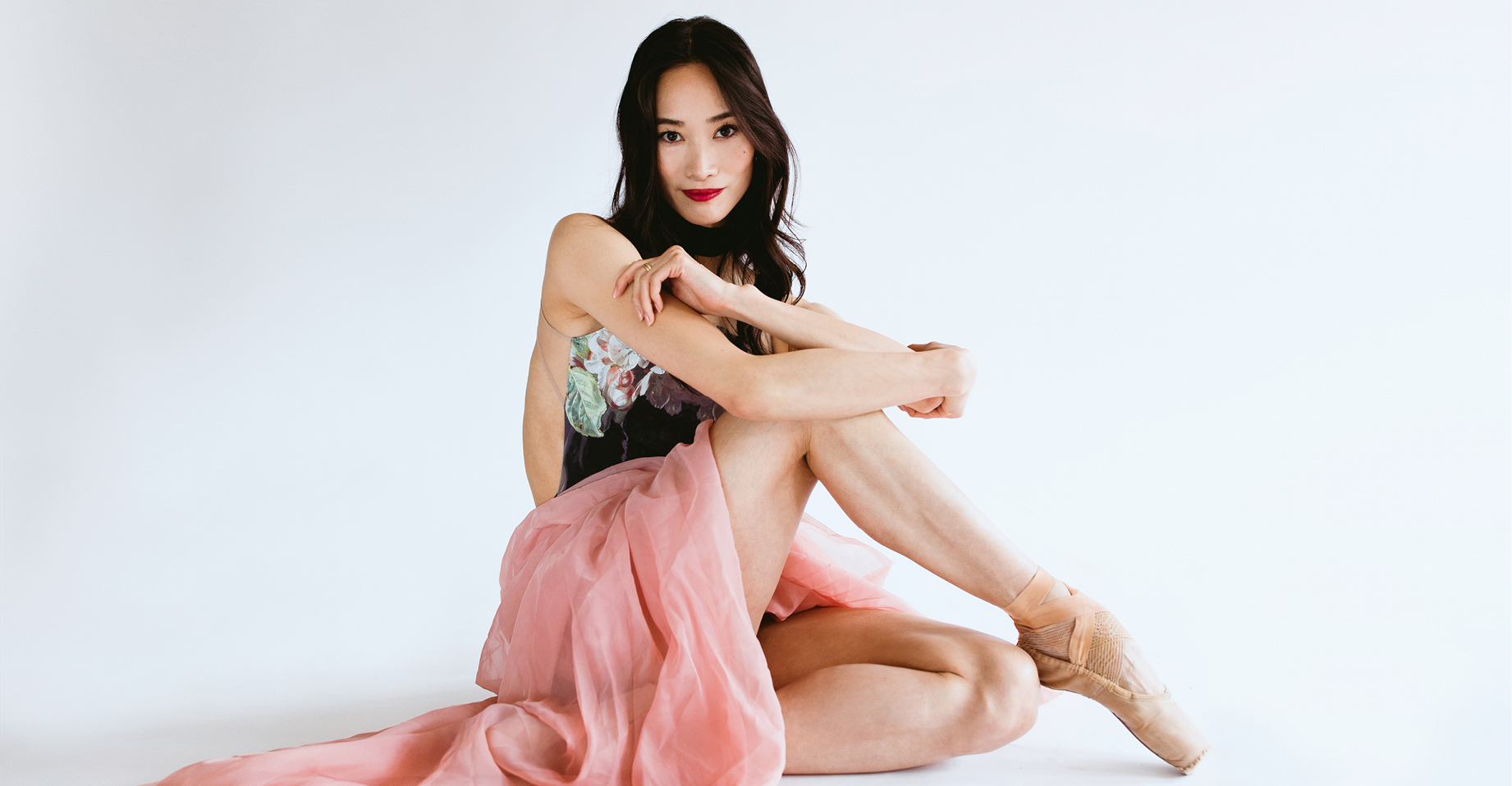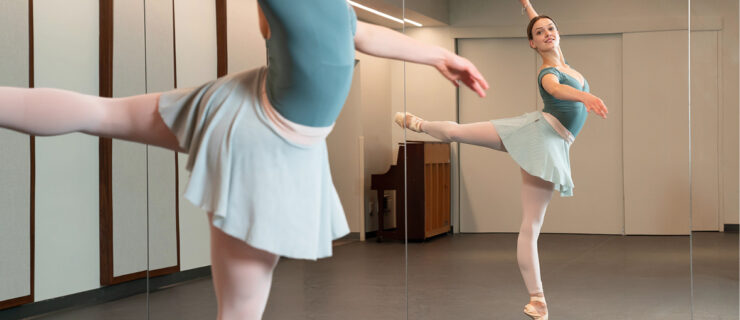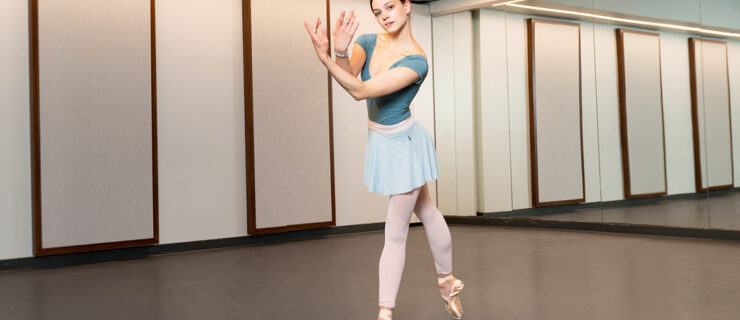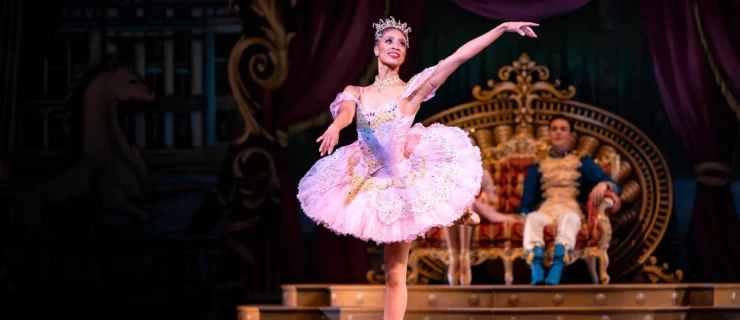All In: For Royal Ballet Principal Fumi Kaneko, Passion and Fortitude Have Helped Her Reach the Top
When Fumi Kaneko first joined London’s Royal Ballet at age 19, she spent every evening crying in the wings. Not out of misery, or homesickness, but because she was performing in the company’s production of Manon, and she was so moved by what she saw onstage. “The acting here is just amazing,” she says. “It goes straight to my heart. I would dance and then watch the end from the wings, and I was literally crying every single time.”
She arrived in London from Osaka, the first time she’d left her home and close-knit family. Kaneko thought she might stay for a year. But a decade later she is still here, talking to me in an anonymous meeting room backstage at the Royal Opera House in Covent Garden. Last year she was promoted to principal, and as a dancer of pristine technique and a deeply dramatic instinct, she has been making lauded debuts in Romeo and Juliet and Swan Lake, as well as creating the role of Satan in Wayne McGregor’s The Dante Project.
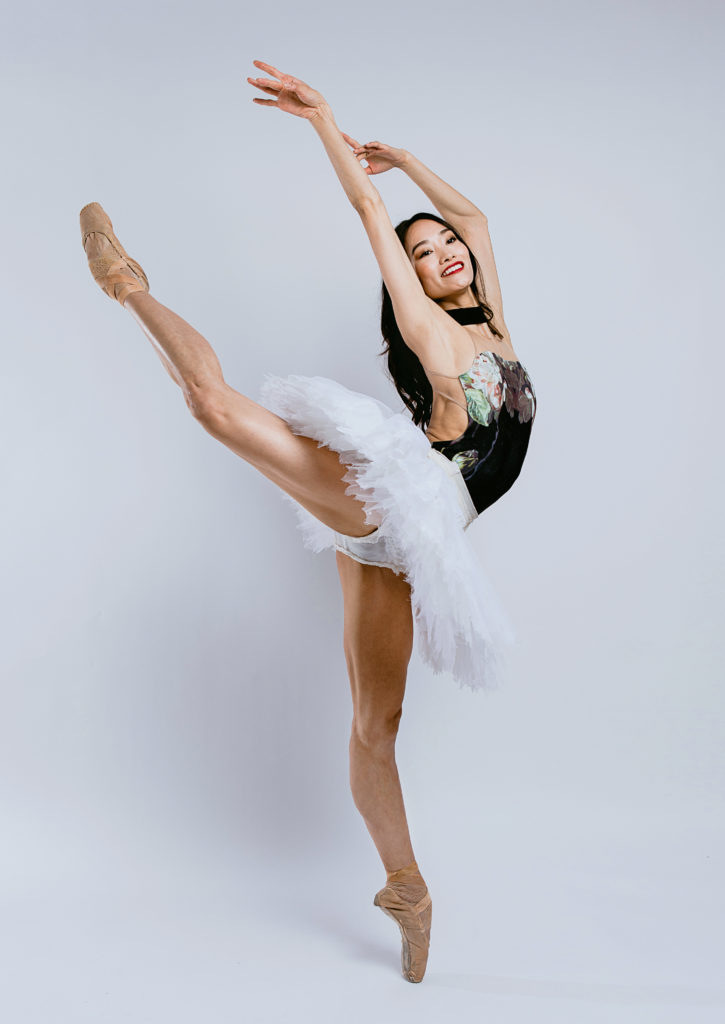
“She definitely deserves principal status,” says renowned ballerina Lesley Collier, who has coached Kaneko. “She’s on a high at the moment. Her Swan Lakes were remarkable, she’s beautiful in [Sleeping] Beauty—she’s got practically everything at her feet.”
It has not been a smooth ride to get here, though. Kaneko has battled through serious injury, twice. After joining The Royal in 2011 she was promoted two years in a row, and as a soloist she was cast as Kitri in Carlos Acosta’s Don Quixote. Landing from a jump in Act I, she snapped a ligament in her knee. “It was horrible,” she remembers, recalling how the curtain had to be lowered. “I was trying to get up: ‘I can do it, I can do it!’ But then it hurt so much and everyone stopped me. My knee just didn’t feel any connection.”
She had surgery, repairing the ligament with a piece of her hamstring, and it took a year’s rehab to get back to work. But in the worst possible stroke of luck, at the end of the next season, she did the same thing to the other knee while jumping in morning class.
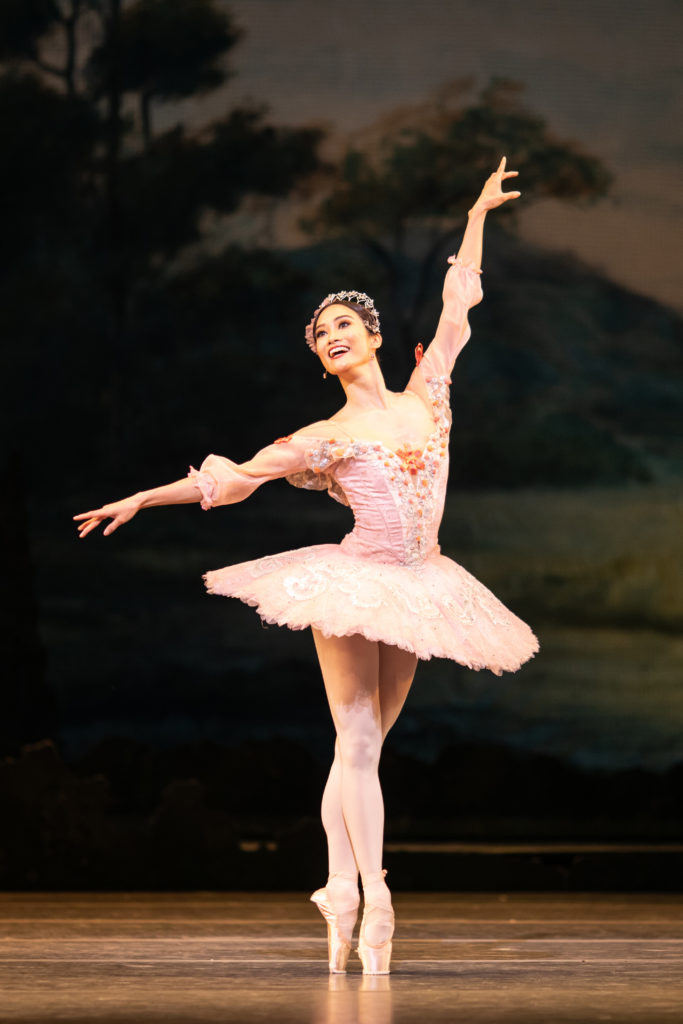
This time the surgeon used a different tendon to attach the ligament and tightened up her other knee at the same time. “So I had both knees done,” Kaneko says. “I could not do anything. It was a very tough time.” When she was low, she tried to focus on her progress. “Three months ago I couldn’t even walk,” she’d tell herself. “Now I can walk, now I can plié—[I tried] to look at the positives.”
Former principal Federico Bonelli remembers dancing with her during her recovery. “She wasn’t feeling strong. So to see where she’s got to now is truly inspiring. How demoralizing it could be to have the same injury to both knees—some people would not recover from that, but she absolutely did.”
Perhaps because, for Kaneko, there has never been a plan B. Dancing is all she’s ever wanted to do. She started at age 3, following her sister. But things became serious when she was 12 and took part in a competition in Japan. “I saw so many amazing dancers the same age as me, I was shocked,” she says, “and I wanted to be better like them.” From then on, “I was all about ballet.” Kaneko went to school during the day, and then trained with Kaoru Jinushi at the Jinushi Kaoru École de Ballet from 5 pm until sometimes 11 pm every evening. “It was mad,” she says. “But I just wanted to dance more and more. I was dreaming about being able to dance from morning to night.”
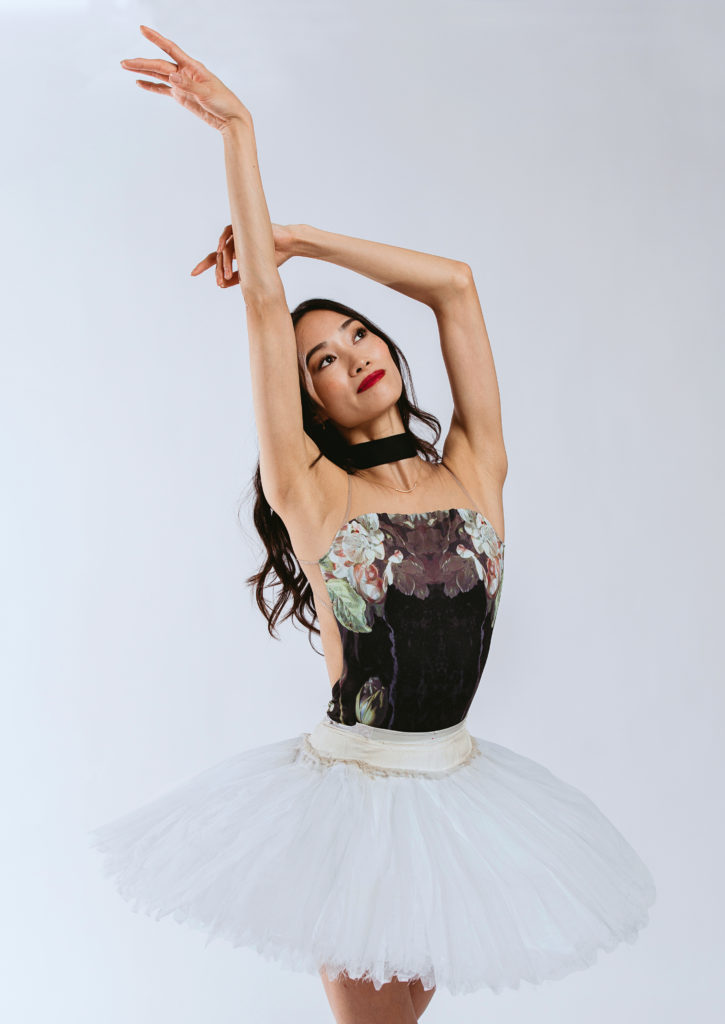
She started to enter international competitions. The 2008 Varna IBC, where she won gold at age 17, was particularly memorable. “We had stage calls after midnight, because it’s outside and for the lighting you have to wait till it gets dark. So I was doing stage call at 3 am, then my teacher gave me corrections until morning, then another stage call in the daytime.” Whether she slept or not she can’t remember. “It was the toughest, but I loved it, dancing under the blue sky, and at night looking at the moon.”
At the 2010 USA IBC in Jackson, she was offered the Royal Ballet contract. Having worn out a DVD of Japanese dancer Miyako Yoshida dancing Nutcracker with The Royal, she said yes. Now she’s following in Yoshida’s footsteps as a principal, and really stepping up to the role. She danced Swan Lake with Bonelli in March of this year, her debut and his swansong. (He retired to become artistic director at Northern Ballet in Leeds.) “She was really committed to telling a story,” says Bonelli, “and the way she brings her ideas and discusses them, there’s real collaboration.” He adds that all his friends commented on her amazing swan arms.
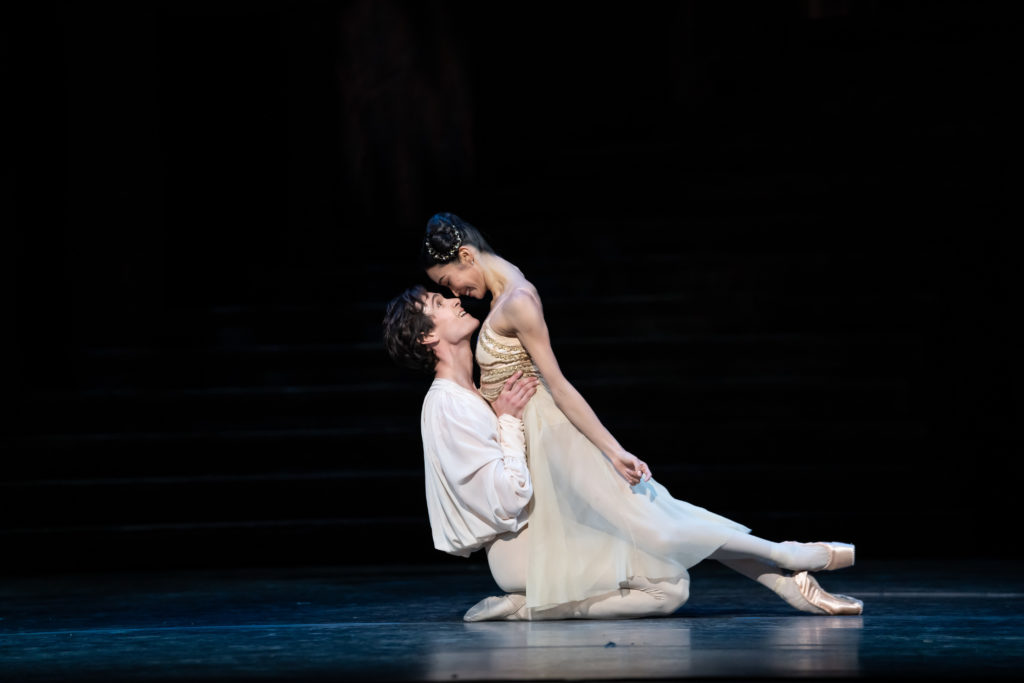
“I loved dancing Swan Lake even more than I expected. I miss rehearsing it so much,” says Kaneko. “It’s really enjoyable to make the differences between the two characters, but technically it’s so challenging. Even one pirouette: with Odette, you do it super-slow, like you’re in water, but with Odile it’s super-quick.”
Dancing Kenneth MacMillan’s Romeo and Juliet last fall brought different challenges, and a huge emotional commitment. Kaneko couldn’t see herself as Juliet at first: “Because now I’ve turned 30, I don’t feel like I can be the cute Juliet I imagined.” But she binged on Franco Zeffirelli’s 1968 film version, “and when I started rehearsal I instantly fell in love with Juliet.” Collier helped her get to know the character better by giving her Shakespeare’s text. (“A few phrases that cling to the choreography,” as Collier puts it.) “I was onstage talking to myself with Shakespeare’s words,” says Kaneko. “And it works.”
Collier also helped Kaneko move away from the idea of Juliet’s sweetness. “As a dancer she’s a beautiful creature,” says Collier, “but I told her, ‘Don’t be afraid to be ugly, because it’s not how you look, it’s about how you feel,’ and she really took it on. Her third act was very, very amazing.” With first soloist William Bracewell as her Romeo, the star-crossed couple went from curiously awestruck to heart-wrenchingly tragic. “William kept telling her to let go,” says Collier, “and every day she let go a bit more, it was wonderful to witness.”

There’s much more to come from Kaneko, who’s realized her dream of dancing from morning till night, only taking the odd break to enjoy the beautiful green spaces near her West London home. She spends a typical evening sewing her pointe shoes and watching Titanic (or some other dramatic, romantic film—not dissimilar to how she likes her ballets). One role she would still love to dance is Manon, that first ballet she was so affected by 10 years ago. “I just want to feel what it’s like to become her,” she says. To learn the secret of moving people to tears, I say. “Exactly!” says Kaneko. “I can’t wait to tell you.”
